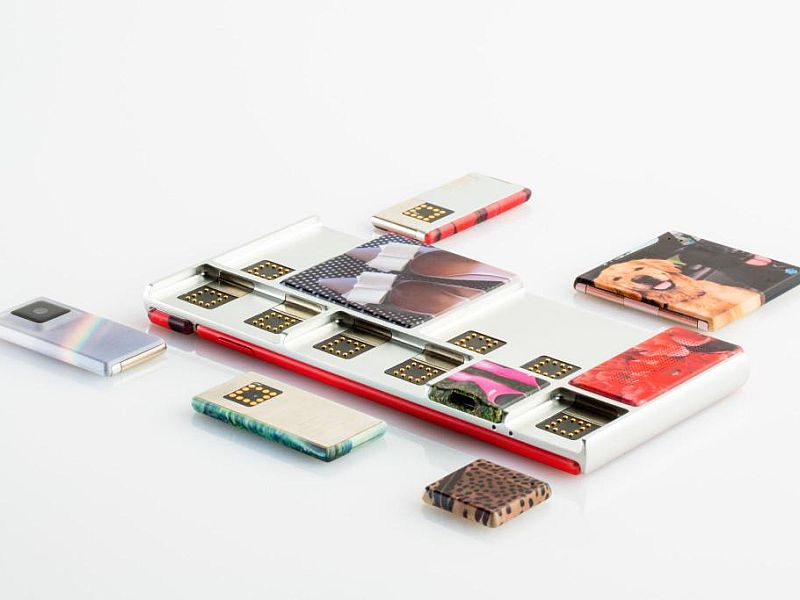- Home
- Mobiles
- Mobiles News
- Google Delays Project Ara Modular Phone Launch Until 2016
Google Delays Project Ara Modular Phone Launch Until 2016

The Project Ara team at the beginning of this year had announced it would launch the modular smartphones this year in Puerto Rico as part of its pilot program. The team however has now confirmed that its phones will not launch until 2016, alongside announcing a "pilot market re-route" to a few locations in the US instead of Puerto Rico.
Announcing the news, the Project Ara team via its Twitter handle in a series of tweets said, "Where are we headed next? We are looking at a few locations in the US" The company, as of now, has not revealed any specific locations in the US where it may launch modular phones. In a following tweet, it said, "When? 2016", accompanied by the hashtags yes we are late and Project Ara (#yeswearelate and #ProjectAra).
The company cited "lots of iterations" in the works as a reason for delay and said, "Why? Lots of iterations... more than we thought." Late last week, Project Ara announced its re-routing plans for its pilot program and wrote on Twitter, "Market pilot re-route."
Adding further, Project Ara clarified that the re-routing doesn't mean there will be no modular phones launching in Puerto Rico. It said, "And this is not goodbye Puerto Rico!"
To refresh, Google's concept for Project Ara is to enable consumers to design their own smartphones, and decide to add features as they need. The project hopes to kick-start an era of do-it-yourself smartphones and Google has been stressing that it's not targeting geeks.
In January, Google showcased its Spiral 2 modular smartphone prototype. The Project Ara Spiral 2 prototype featured a HD (720x1280 pixels) screen, choice of Nvidia Tegra K1 or Marvel PX1928 processor, 5-megapixel primary camera, Micro-USB port, battery, speaker, and connectivity options included Wi-Fi, Bluetooth, and 3G. The Spiral 2 prototype included 11 working modules including 3G (with Band 2 and 1x1 Band 5 antennas), Wi-Fi, Bluetooth, Receiver with light and proximity sensors, USB charger module, and a 2x2 battery module. The Spiral 2 prototype also features the electro-permanent magnets in the exoskeleton, saving space in the modules.
Get your daily dose of tech news, reviews, and insights, in under 80 characters on Gadgets 360 Turbo. Connect with fellow tech lovers on our Forum. Follow us on X, Facebook, WhatsApp, Threads and Google News for instant updates. Catch all the action on our YouTube channel.
Related Stories
- Samsung Galaxy Unpacked 2025
- ChatGPT
- Redmi Note 14 Pro+
- iPhone 16
- Apple Vision Pro
- Oneplus 12
- OnePlus Nord CE 3 Lite 5G
- iPhone 13
- Xiaomi 14 Pro
- Oppo Find N3
- Tecno Spark Go (2023)
- Realme V30
- Best Phones Under 25000
- Samsung Galaxy S24 Series
- Cryptocurrency
- iQoo 12
- Samsung Galaxy S24 Ultra
- Giottus
- Samsung Galaxy Z Flip 5
- Apple 'Scary Fast'
- Housefull 5
- GoPro Hero 12 Black Review
- Invincible Season 2
- JioGlass
- HD Ready TV
- Laptop Under 50000
- Smartwatch Under 10000
- Latest Mobile Phones
- Compare Phones
- Honor Win RT
- Honor Win
- Xiaomi 17 Ultra Leica Edition
- Xiaomi 17 Ultra
- Huawei Nova 15
- Huawei Nova 15 Pro
- Huawei Nova 15 Ultra
- OnePlus 15R
- Asus ProArt P16
- MacBook Pro 14-inch (M5, 2025)
- OPPO Pad Air 5
- Huawei MatePad 11.5 (2026)
- Xiaomi Watch 5
- Huawei Watch 10th Anniversary Edition
- Acerpure Nitro Z Series 100-inch QLED TV
- Samsung 43 Inch LED Ultra HD (4K) Smart TV (UA43UE81AFULXL)
- Asus ROG Ally
- Nintendo Switch Lite
- Haier 1.6 Ton 5 Star Inverter Split AC (HSU19G-MZAID5BN-INV)
- Haier 1.6 Ton 5 Star Inverter Split AC (HSU19G-MZAIM5BN-INV)

















